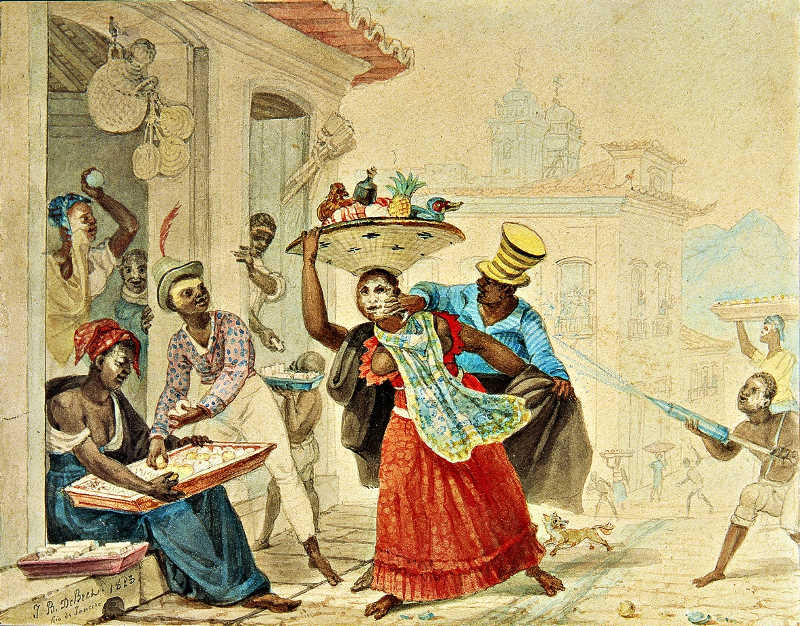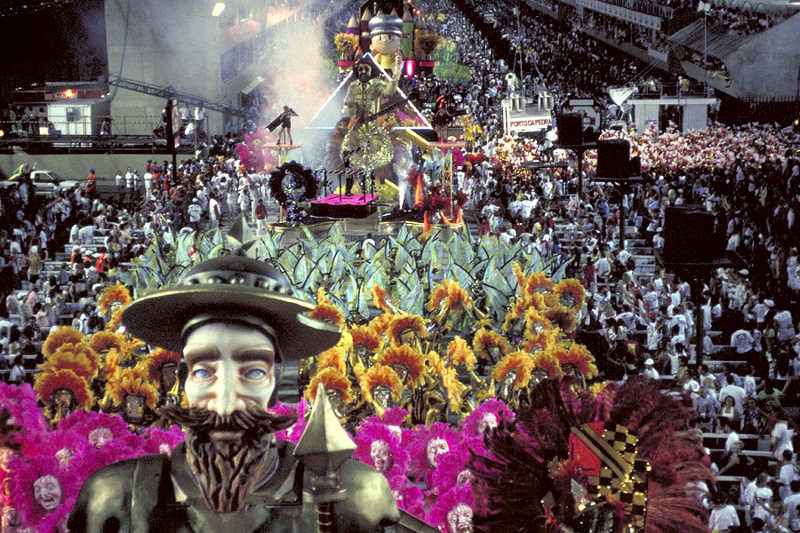
Rio de Janeiro Carnival History
Carnival in Rio de Janeiro is not new. First bouts of carnival celebrations go back as much at the beginning of the XVII century, in the shape of masquerade parties held by the bourgeoisie, an idea imported from Paris.
The Entrudo, as it was first called, was based on crazy behavior, and throwing stuff of every kind one to the other.
Later on it developed in Grandes Sociedades (1855), Cordão Carnavalesco (1870) but more with an idea of parades, fun, masks, luxury. Carnival as an exhibition of wealth, not so much different from the idea coming from Venice.
Some interruptions to yearly celebrations were due to exaggerate behavior, like throwing along with scented spheres, also bad smelling fruits, and breaking into houses.

Jean Baptiste Debret: "Dia de Entrudo" (1823)
Carnival in modern times

Samba Unidos do Porto da Pedra - Carnival 1997 (5th place)
Starting from 1872 we are approaching the modern celebrations with the "Ranchos Carnavalescos ", also open to participation from the working class and in 1907 the "Corso", car parades along the Rio Branco, downtown Rio as a different novelty. .
Also competitions were started among the "bairros" of the city, back then the capital of Brasil.
Around 1920 we have the birth of Samba Schools, that eventually consolidated around the 40's and 50's as samba got stronger as a leading musical genre.
And Carnival went "popular", and later "black" as being more cherished by the black population in Rio.
As Joãozinho Trinta (renowned "carnavalesco", Samba School art director) once said: "O povo gosta é de luxo, quem gosta de miséria é intelectual”. (People like luxury, intellectuals like poverty).
Carnival is a moment of dream and exhibition, the dream of luxury, gold, fame.